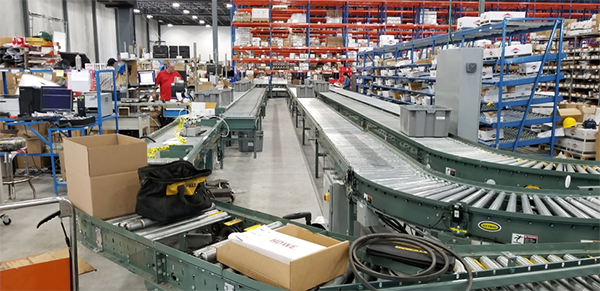
The Art of Reusing Conveyor
Mike Czernik | 28 November 2018
Everyone likes the shine and novelty of brand new conveyor directly from a supplier, but sometimes you will be tasked with the exciting endeavor of reusing conveyor the customer already has. Having done this recently, here are a few tips to make the redesign and transition as smooth as possible for you and your installers:
1. Keep It Together
The biggest problem you can come across is losing track of what section is where and what belt belongs to which conveyor. Now, you can disassemble the entire thing, label appropriately and hope for the best when installing, but strategic dismantling will save you a lot of headaches, money, and time. Keep as many segments together as you can and focus on coordinating a plan for transporting larger runs. This is critical, especially considering reused conveyor could potentially be line-shaft or follower-driven v-belt, which could get tricky when dismantling and reassembling.
1.5. CAD Whenever Possible

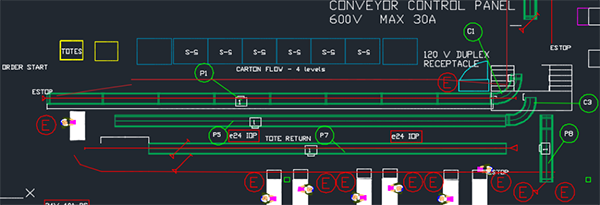 The reason this step is 1.5 and not 2 is because having a CAD file of the old system on hand can be rare – so when it happens, take absolute advantage. Being able to visually manipulate the recycled conveyor through AutoCAD into the new design increases spacing accuracy, confirms conveyor flow direction, allows side-by-side system comparison. In the long run it will also make the installation far smoother with respect to finding appropriate conveyor mark numbers and dismantle/install priority.
The reason this step is 1.5 and not 2 is because having a CAD file of the old system on hand can be rare – so when it happens, take absolute advantage. Being able to visually manipulate the recycled conveyor through AutoCAD into the new design increases spacing accuracy, confirms conveyor flow direction, allows side-by-side system comparison. In the long run it will also make the installation far smoother with respect to finding appropriate conveyor mark numbers and dismantle/install priority.
2. Label, Label, Label
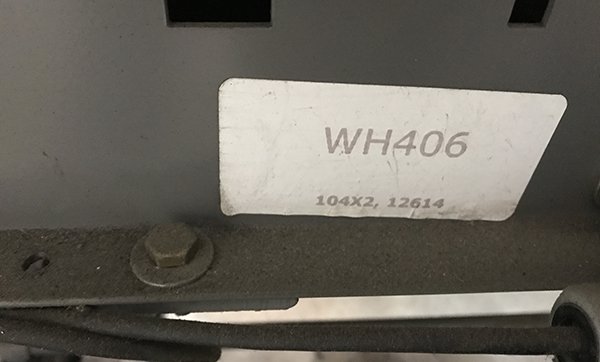 In the nitty gritty world of dismantle and install, nothing is more reliable than a sticker indicating an old mark number, what the new mark number is supposed to be, and what other mark numbers it belongs to. By labeling the conveyor prior to any dismantle, you can visually distinguish the distinct runs of conveyor you want to keep entirely intact, the sections of conveyor you will have to connect on-site, and which pieces are junk. Regardless of the prep work you do with the previous steps, once the conveyor is being loaded and unloaded on skids and trucks, things will get confusing for you and the installers unless there is clear and defined labeling.
In the nitty gritty world of dismantle and install, nothing is more reliable than a sticker indicating an old mark number, what the new mark number is supposed to be, and what other mark numbers it belongs to. By labeling the conveyor prior to any dismantle, you can visually distinguish the distinct runs of conveyor you want to keep entirely intact, the sections of conveyor you will have to connect on-site, and which pieces are junk. Regardless of the prep work you do with the previous steps, once the conveyor is being loaded and unloaded on skids and trucks, things will get confusing for you and the installers unless there is clear and defined labeling.
3. Touch-Up Time
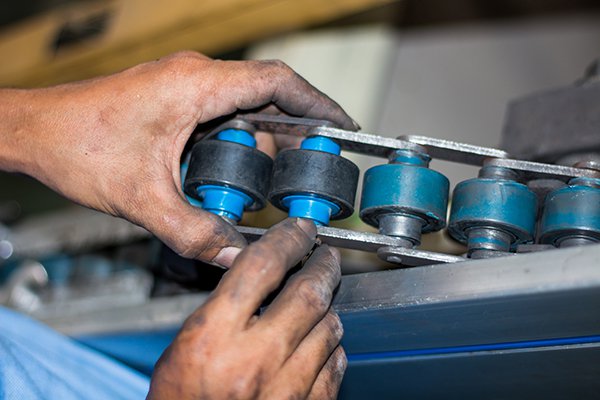 With reused conveyor there is the expectation that some portions will be… well… used. Our mission is to satisfy our customer with a system they can rely on, and one of the benefits of reusing conveyor is that you can identify problems one section at a time. If possible, getting a smaller group of installers to work on fixing problems found in the conveyor while the remainder is being unloaded and installed can be extremely beneficial to the overall functionality of the system. Faulty rollers, worn lacing, loose guardrails, etc. can be small deficiencies that, when corrected, will make the system function better despite the conveyor being relatively identical to the one that left the previous facility.
With reused conveyor there is the expectation that some portions will be… well… used. Our mission is to satisfy our customer with a system they can rely on, and one of the benefits of reusing conveyor is that you can identify problems one section at a time. If possible, getting a smaller group of installers to work on fixing problems found in the conveyor while the remainder is being unloaded and installed can be extremely beneficial to the overall functionality of the system. Faulty rollers, worn lacing, loose guardrails, etc. can be small deficiencies that, when corrected, will make the system function better despite the conveyor being relatively identical to the one that left the previous facility.
4. Don’t Neglect the Inessential
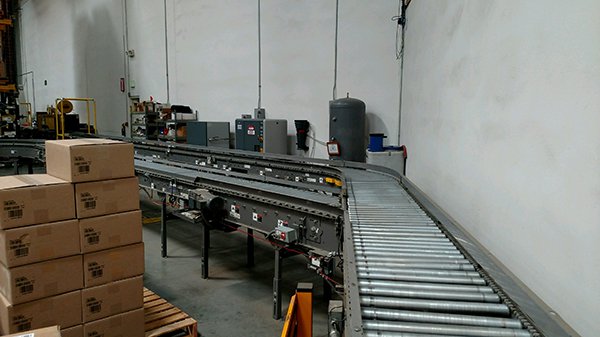 Not everything will have a direct purpose in the new system; maybe there’s a curve that will no longer fit, or extra conveyor that will be left for scrap – but that doesn’t mean it will be useless in the long run! Any unused conveyor holds potential for spare or replacement parts. Rollers, belts, pulleys, even the frame can be used in the future by the customer’s maintenance crew; be sure to list out what you have left over when everything is said and done, you may be surprised with what you find!
Not everything will have a direct purpose in the new system; maybe there’s a curve that will no longer fit, or extra conveyor that will be left for scrap – but that doesn’t mean it will be useless in the long run! Any unused conveyor holds potential for spare or replacement parts. Rollers, belts, pulleys, even the frame can be used in the future by the customer’s maintenance crew; be sure to list out what you have left over when everything is said and done, you may be surprised with what you find!
Regardless of whatever efficient tips, tricks or shortcuts you can come up with, creating a new system with reused conveyor is daunting with a handful of risks involved, especially when the conveyor is relatively aged. It can be a tough but extremely rewarding task once completed and functional. Hopefully some of the tips listed above will come in handy next time you find yourself considering a project that would benefit from reused conveyor. Good luck!
Mike Czernik is a Project Engineer with Bastian Solutions out of the Canada office. He has studied Mechanical and Software Engineering at the University of Guelph and specialized in Mechatronics during his final 2 years. Mike is extremely passionate about evolving technologies and automation and their effects on the industry.
Comments
No comments have been posted to this Blog Post
Leave a Reply
Your email address will not be published.
Comment
Thank you for your comment.